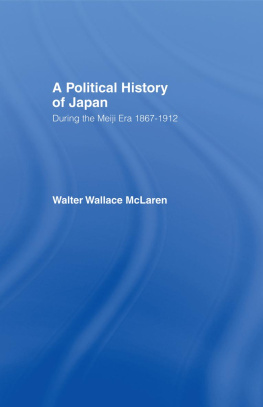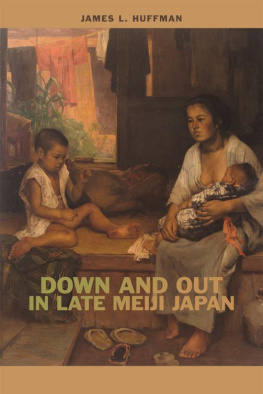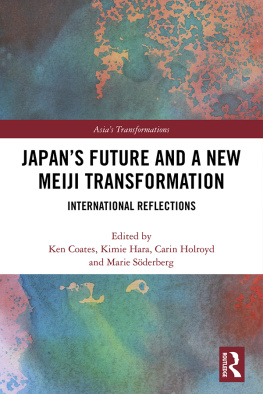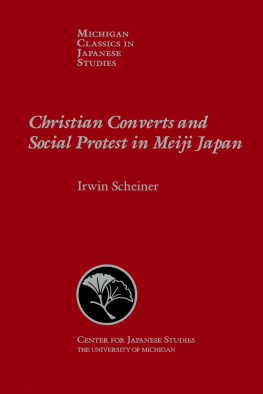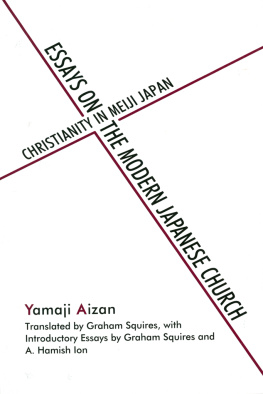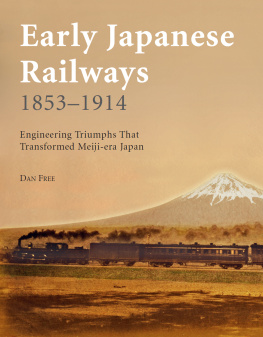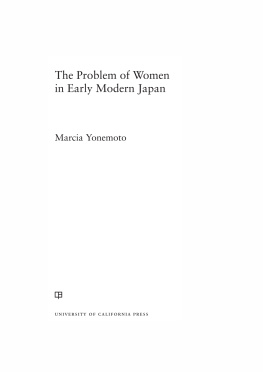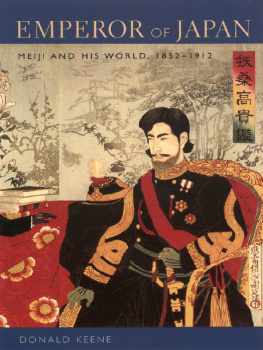Mara Patessio - Women and Public Life in Early Meiji Japan
Here you can read online Mara Patessio - Women and Public Life in Early Meiji Japan full text of the book (entire story) in english for free. Download pdf and epub, get meaning, cover and reviews about this ebook. year: 2020, publisher: University of Michigan Center for Japanese Studies, genre: Politics. Description of the work, (preface) as well as reviews are available. Best literature library LitArk.com created for fans of good reading and offers a wide selection of genres:
Romance novel
Science fiction
Adventure
Detective
Science
History
Home and family
Prose
Art
Politics
Computer
Non-fiction
Religion
Business
Children
Humor
Choose a favorite category and find really read worthwhile books. Enjoy immersion in the world of imagination, feel the emotions of the characters or learn something new for yourself, make an fascinating discovery.
- Book:Women and Public Life in Early Meiji Japan
- Author:
- Publisher:University of Michigan Center for Japanese Studies
- Genre:
- Year:2020
- Rating:3 / 5
- Favourites:Add to favourites
- Your mark:
- 60
- 1
- 2
- 3
- 4
- 5
Women and Public Life in Early Meiji Japan: summary, description and annotation
We offer to read an annotation, description, summary or preface (depends on what the author of the book "Women and Public Life in Early Meiji Japan" wrote himself). If you haven't found the necessary information about the book — write in the comments, we will try to find it.
Women and Public Life in Early Meiji Japan — read online for free the complete book (whole text) full work
Below is the text of the book, divided by pages. System saving the place of the last page read, allows you to conveniently read the book "Women and Public Life in Early Meiji Japan" online for free, without having to search again every time where you left off. Put a bookmark, and you can go to the page where you finished reading at any time.
Font size:
Interval:
Bookmark:

Women and Public Life in Early Meiji Japan
Michigan Monograph Series in Japanese Studies
Number 71
Center for Japanese Studies
The University of Michigan
Women and Public Life in Early Meiji Japan:
The Development of the Feminist Movement
MARA PATESSIO
Center for Japanese Studies
The University of Michigan
Ann Arbor 2011
Open access edition funded by the National Endowment for the Humanities/Andrew W. Mellon Foundation Humanities Open Book Program.
Copyright 2011 by The Regents of the University of Michigan
Published by the Center for Japanese Studies,
The University of Michigan
1007 E. Huron St.
Ann Arbor, MI 48104-1690
Library of Congress Cataloging-in-Publication Data
Patessio, Mara, 1975
Women and public life in early Meiji Japan : the development of the feminist movement / Mara Patessio.
p. cm. (Michigan monograph series in Japanese studies ; no. 71)
Includes bibliographical references and index.
ISBN 978-1-929280-66-7 (hbk. : alk. paper) ISBN 978-1-929280-67-4 (pbk. : alk. paper)
1.WomenJapanHistory19th century.2. WomenJapanHistory 20th century.3. FeminismJapanHistory19th century.4. Feminism JapanHistory20th century.5. JapanHistory1868-I. Title. II. Series.
HQ1762.P38 2011
305.488956009034dc22
2010050270
This book was set in Times New Roman.
Kanji was set in Hiragino Mincho Pro.
This publication meets the ANSI/NISO Standards for Permanence of Paper for Publications and Documents in Libraries and Archives (Z39.48-1992).
Printed in the United States of America
ISBN 978-1-92-928067-4 (paper)
ISBN 978-0-47-212765-8 (ebook)
ISBN 978-0-47-290160-9 (open access)
The text of this book is licensed under a Creative Commons Attribution-NonCommercial-NoDerivatives 4.0 International License: https://creativecommons.org/licenses/by-nc-nd/4.0/
Contents
Acknowledgments
A number of individuals have helped me with this project in various ways over the past ten years. My PhD would not have been finished without the generous support, help, and direction of my supervisor, Professor Peter Kornicki. Now that I am a teacher myself, I better appreciate the amount of time and help he devoted to my research. I hope with this book I have not let him down.
Discussions with Dr. Francesca Orsini, Dr. Susan Daruvala, Dr. Mark Morris, Dr. Chiara Ghidini, Dr. Anya Andreeva, Dr. Anna Boermel, Dr. Darren Aoki, Dr. Sean Bready, Dr. Tracey Gannon, Dr. Gaye Rowley, and Dr. Barak Kushner stimulated new ideas. I am really grateful to them for the time and meals they shared with me.
While a PhD student, the generous support of the Japan Foundation Endowment Committee enabled me to do research in Japan. My research in Japan would not have been so successful without the help and generosity of all the archivists and librarians of the various schools opened for girls during the Meiji period that I visited, as well as the archivists at Tokyo Universitys Meiji Shinbun Zasshi Bunko, who always helped me locate hard to find Meiji period articles. Their time and expertise have been invaluable. In Cambridge, the Japanese studies librarian, Mr. Noboru Koyama, as well as Mrs. Kazumi Cunnison, always found the time to answer my questions. To them I am most grateful.
After completing my PhD, I went to Japan with a postdoctoral scholarship from the Japan Society for the Promotion of Science and collaborated with Professor Ogawa Mariko for a year. Her help in obtaining the scholarship was crucial for the development of my project. While there I was able to participate in the activities of Ochanomizu Universitys Gender Study Center, and I want to thank Professor Tachi Kaoru, Professor Ito Ruri, soon to be Dr. Hasegawa Kazumi, and all the graduate students for allowing me to become a member of their group. Meeting Cynthia Enloe, who was a visiting professor at the center, was like being catapulted into a new world.
Although at that point Cambridge seemed to be a closed chapter in my life, Professor Peter Kornicki, not having done enough for me already, was granted funding from the Leverhulme Trust for a collaborative project, and I found myself in Cambridge for two additional years. Part of that time was spent doing research in Japan, and I want to thank in particular Mr. Kawao Toyoshi, director of Takinogawa Gakuen, for opening its doors to me.
While in Cambridge I was fortunate enough to meet Dr. Naoko Shimazu, who not only gave me a temporary lectureship at Birkbeck, University of London, but also became a precious supporter and friend. Her suggestions and discussions have been extremely important for my careers development, and I hope to be able to count on her friendship and support in the coming years as well.
My colleagues at the University of Manchester, where I work now, and especially Professor Ian Reader and Mr. Jonathan Bunt, have been extremely positive toward my work and have allowed me to bring it to a conclusion. After working with Professor Kornicki, I thought it would be impossible to find such a congenial environment in which to work, but I was wrong. Further financial support by the Japan Foundation Endowment Committee allowed me to bring this project to a close.
The two anonymous readers of my manuscript made many important suggestions that strengthened my theories and the way in which I presented them. Susan Meehan kindly consented to go through this work and helped me with its style. Janet Opdyke, my copyeditor, and Bruce Willoughby, executive editor of the Michigan Monograph Series in Japanese Studies, gave the manuscript its final push. Thank you.
Some of the arguments developed in the following chapters were first attempted in the articles Western Women Missionaries and Their Japanese Female Charges, 1880-1890, Womens History Review 16.2 (2007): 59-77 (journal website: www.informaworld.com); The Creation of Public Spaces by Women in the Early Meiji Period and the Tky Fujin Kyfkai, The International Journal of Asian Studies, 3.2 (2006): 155-82 (published by Cambridge University Press); and Womens Participation in the Popular Rights Movement (Jiy Minken Undo) during the Early Meiji Period, U.S.-Japan Womens Journal 27 (2004): 3-26 ( Josai International Center for the Promotion of Arts and Sciences, Josai University).
To my family and to Andrew words fail me.
Early Meiji Women and the Public Sphere
Beyond the wall on one side of our school was a rough path leading past several small villages, with ricefields and patches of clover scattered between. One day, when a teacher was taking a group of us girls for a walk, we came upon a dry ricefield dotted with wild flowers. We were gathering them with merry chattering and laughter when two village farmers passed by, walking slowly and watching us curiously. What is the world coming to, said one, when workable-age young misses waste time wandering about through bushes and wild grass? They are grasshoppers trying to climb the mountain, the other replied, but the sun will scorch them with scorn. There can be only pity for the young man who takes one of those for his bride. We walked on homeward. Just as we reached our gate in the hedge wall one of the girls, who had been rather quiet, turned to me. Nevertheless, she said, defiantly, the grasshoppers are climbing the mountain into the sunlight.
In recent years, an ever-increasing amount of scholarship has been published in English on Japanese women. On the one hand, the Edo period (16031867) has long been regarded as an age of female oppression, but recent publications show that this was not always the case.
Font size:
Interval:
Bookmark:
Similar books «Women and Public Life in Early Meiji Japan»
Look at similar books to Women and Public Life in Early Meiji Japan. We have selected literature similar in name and meaning in the hope of providing readers with more options to find new, interesting, not yet read works.
Discussion, reviews of the book Women and Public Life in Early Meiji Japan and just readers' own opinions. Leave your comments, write what you think about the work, its meaning or the main characters. Specify what exactly you liked and what you didn't like, and why you think so.



